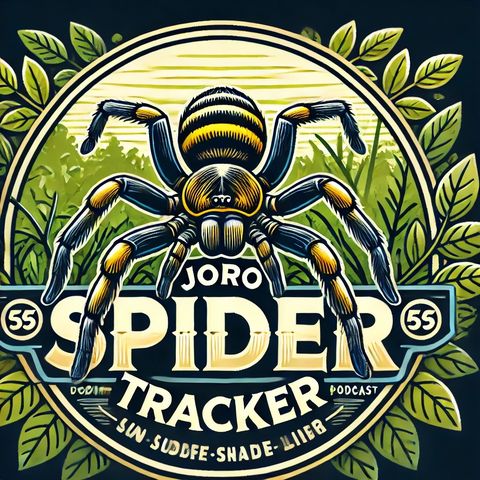Joro Spiders Take Over Southeastern US: Assessing Ecological Impacts and Management Strategies

Download and listen anywhere
Download your favorite episodes and enjoy them, wherever you are! Sign up or log in now to access offline listening.
Description
The Trichonephila clavata, more commonly known as the Joro spider, is an intriguing species native to East Asia, particularly Japan, China, Taiwan, and Korea. In recent years, this species has...
show moreThe Joro spider belongs to the orb-weaver family, which is known for creating intricate spiral wheel-shaped webs often found in gardens, forests, and fields. One of the most striking attributes of the Joro spider is its size and coloration. Adults can have a leg span of up to 4 inches and are distinguished by a bright yellow and black pattern on their bodies, making them quite noticeable.
Despite their daunting size and appearance, Joro spiders are not known to be harmful to humans. They possess venom, like many spiders, but it is primarily used to subdue their prey and is not potent enough to cause significant harm to humans.
The term "flying spiders" used in some sensational headlines refers to the spider’s ability to "balloon." This is a method used by some species of spiders to travel through the air by releasing silk threads that catch the wind, allowing them to be carried to new locations. This ballooning behavior is one way Joro spiders have potentially expanded their range so quickly.
Joro spiders were first reported in the U.S. state of Georgia around 2014, and since then, their presence has been recorded in several other southeastern states. Their rapid spread is attributed in part to their resilience to colder temperatures compared to other spiders, a factor that could contribute to their further expansion in the U.S.
Ecologically, the Joro spider can have both positive and negative impacts. On the positive side, they help control pest populations, which can be beneficial for agriculture and backyard gardens. However, there is a concern about their potential impact on native species and ecosystems, as they compete with local spiders and other predators for resources.
Despite the often alarming headlines, it is essential to approach the Joro spider with a balanced perspective, recognizing both its role in local biodiversity and the need for research to understand its long-term impacts on native ecosystems. Managing its spread and studying its ecological impact are crucial to ensuring that native species are not outcompeted or displaced, and that balance is maintained in local ecosystems where these spiders have become established.
Information
| Author | QP-4 |
| Organization | William Corbin |
| Website | - |
| Tags |
Copyright 2024 - Spreaker Inc. an iHeartMedia Company

Comments